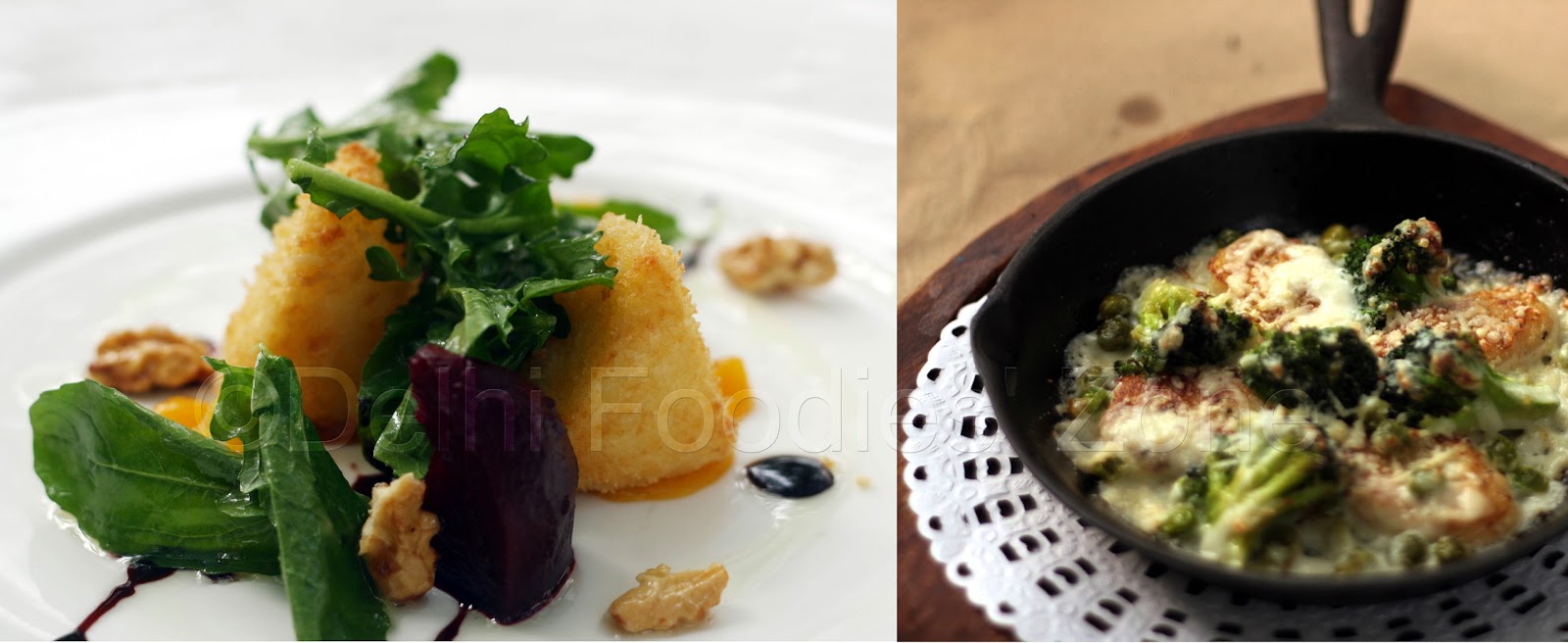This time round, I took my seat in their GreenHouse to sample the best of local produce from India. It is only opportune to salute the sheer brilliance of Chef Sujan Sarkar and team who have taken modern gastronomy to another level in India. There are no gimmicks involved. Only. Real. Food. The 9-course Slow food dinner with a welcome drink was pegged at Rs 1900. The same menu is available with wine too.
Here are my top picks from the fairy-tale like dinner
Pumpkin and Goat Cheese,Fermented Gooseberry, Oreo
Crispy pumpkin strands, cape gooseberry fermented in lactic acid with a slight tang and a gorgeous faux oreo made with black olive shortbread to get the colour right, filled with creamy citrus scented goat cheese mousse to make a fab filling. Brilliant trailer, this! Sorry, not sharing a pic as the one I have is half eaten.
Best of ‘The Green Bean’ farm
Wood sorrel, Gondhoraj Lime sorbet
Gondhoraj lime is the Indian equivalent of Kaffir lime and is a favourite of the Bengali community. Its flavours were combined with wild wood sorrel to form an aromatic sorbet served in a gondhoraj lime shell. The natural notes hit the spot and the taste lingered in my mouth for a long, long time.
Kalari, Gucci and walnut Thecha, a slice of Kashmir
All regional Kashmiri flavours on a plate! This dish is a modern gastronomical tribute to the valley. You may have had the Kashmiri Tarimi a million times, but this dish belongs right up there. Sautéed Kashmiri Morels (the prized fungi from the valley) came in a white onion and mushroom gravy, topped with pan-seared Kalari Cheese from Kashmir and sprinkled with a walnut and coriander thecha crumb that gave the dish a crunch. The walnuts, again coming from the valley, are much sought after. Overall, the dish had an earthy flavour from the morels, woody rendering from the nuts and robustness of the Kalari cheese. The white onion gravy helped the flavours merge well. It was wilderness on a plate with unparalleled textures.
Ash gourd, Radish, 4S Buttermilk
Buttermilk (from 4S brand) was churned into an ice-cream and served along with a candied ash gourd strip which is actually our petha and a thin strip of caramelized radish. While buttermilk ice-cream was a first for me, who knew it’d taste so nice and go well with radish? The candied ash gourd rendered sweetness and blended with the rest of the flavours like no other. These were topped with a pretty red apple blossom flower (from Krishi Cress) that made the dish ooze oomph as if it has descended right from the ramp and walked to my plate. Whee!
Priya rice, burnt butter, chocolate, coconut
About Slow Food movement
The Slow Food movement supports local produce and respects the environment. To know more click here



















